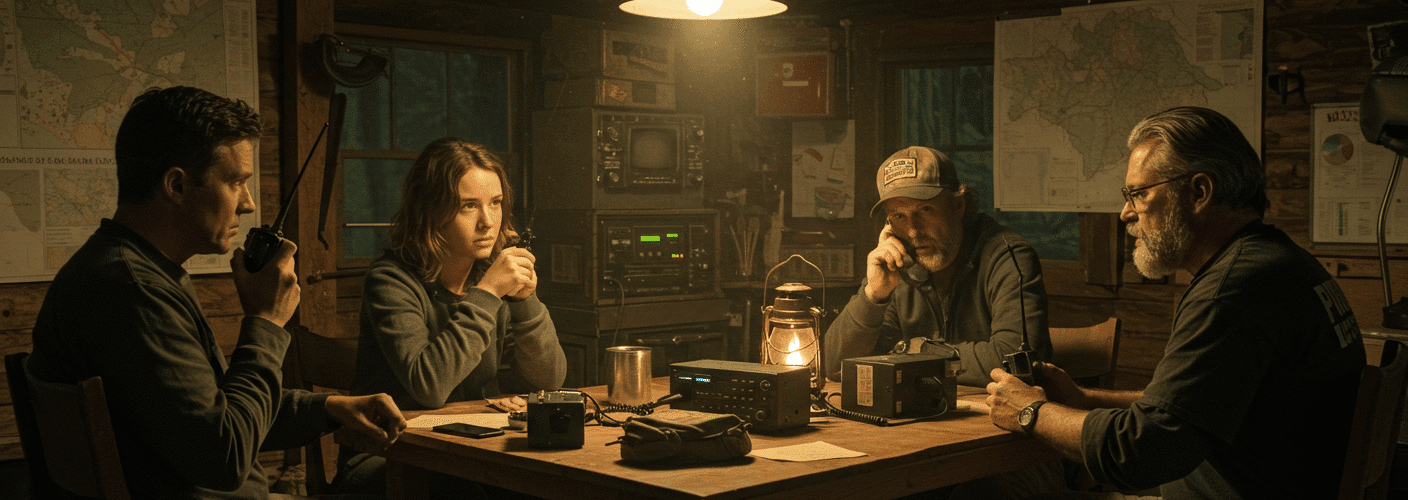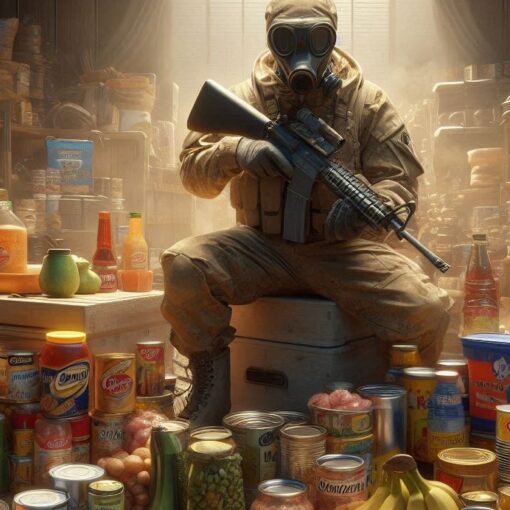Please Note: This post may contain affiliate links. If you click one of them, we may receive a commission at no extra cost to you. As an Amazon Associate, I earn from qualifying purchases.
You could feel like a deer in headlights when it comes to getting ready for a calamity. I mean, who wants to think about zombies, earthquakes, or floods? (Okay, maybe the last one is just me.) But here’s the thing: getting ready doesn’t have to be all bad. You can actually prepare for success when life throws you curveballs by making some plans and having a decent sense of humor. So, fetch your favorite snack and let’s get started on the basics of getting ready!
Top Takeaways and Key Concepts
- Create a family emergency communication plan so everyone knows how to connect during crises.
- Build a simple, customized emergency kit with essentials, comfort items, and non-perishable food.
- Practice regular disaster drills to make emergency responses automatic and reduce panic.
- Stay informed through reliable alerts and social media while verifying information before acting.
- Join community preparedness programs to share knowledge, resources, and mutual support.
Summary of This Article
This article turns the serious topic of disaster preparedness into an engaging, practical guide for everyone. It explains how to make emergency communication plans, establish meeting points, and keep calm through regular practice drills. Readers learn to build personalized emergency kits that include both survival necessities and morale-boosting comfort items. The article also highlights the importance of staying informed using trusted alerts and social media updates while filtering misinformation. Finally, it emphasizes teamwork through local preparedness groups, showing that readiness is easier—and even fun—when done together.
Video of This Article
Understanding the Basics of Disaster Preparedness
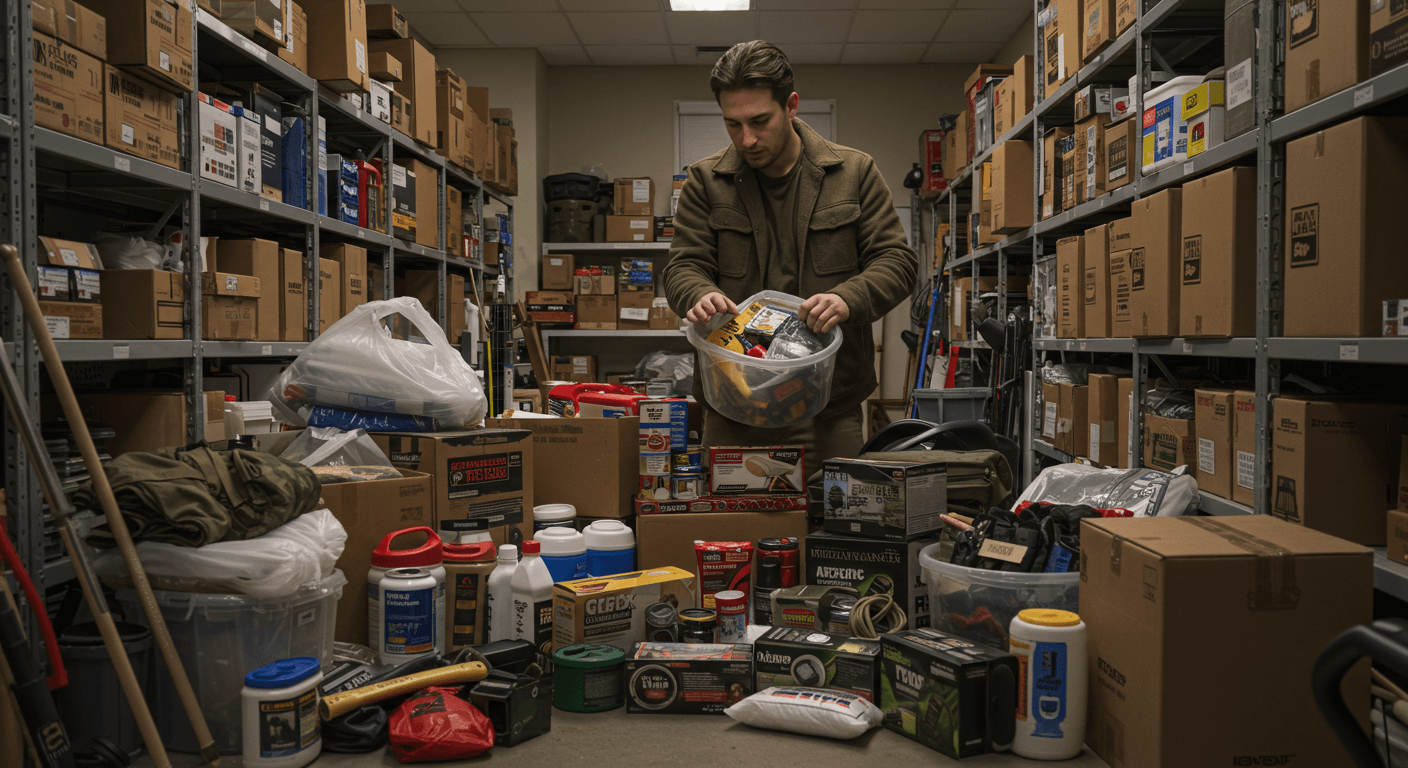
What does it mean to be ready for a tragedy in the first place? In short, it’s about being ready for emergencies with a plan and resources. When danger comes up, think of it as your superhero cape. You’ll be ready to swoop in and save the day! But why do we care? Well, calamities can happen without any warning. Being ready for anything, including a natural disaster or an unexpected power loss during your binge-watching marathon, helps keep you safe.
You don’t have to go all out and build a bunker full of freeze-dried food, unless it seems like fun! Instead, focus on getting the things you need and establishing plans that work for you. If you live in a place that is likely to see hurricanes or tornadoes, like I do, it’s a no-brainer to have additional batteries and flashlights on hand. Honestly, no one wants to search for their cat in the dark while trying to figure out where that strange sound came from!
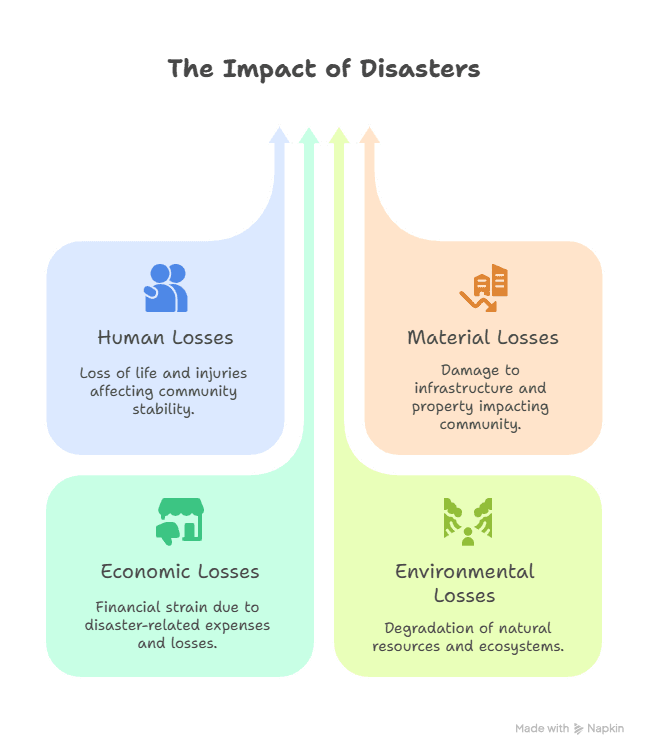
Also, it’s important to be able to talk to loved ones amid emergencies. Think about how crazy it would be if a natural disaster happened: power went out, cell towers went down, and everyone was trying to figure out what was going on. Without the sunny beaches and reality show cameras, it might feel like being put into a live-action game of “Survivor.” It’s crucial to have solid ways to talk to people ready to go so you don’t get lost in the shuffle.
This can include having walkie-talkies on available or making sure everyone knows how to use them well. Walkie-talkies are quite useful; they’re like those old flip phones but lot cooler! You can still talk to them even if your phone decides to take a break because they don’t use cell networks. Just think of how much better it would be to be able to talk to your family while you’re in an emergency instead of playing a game of charades!
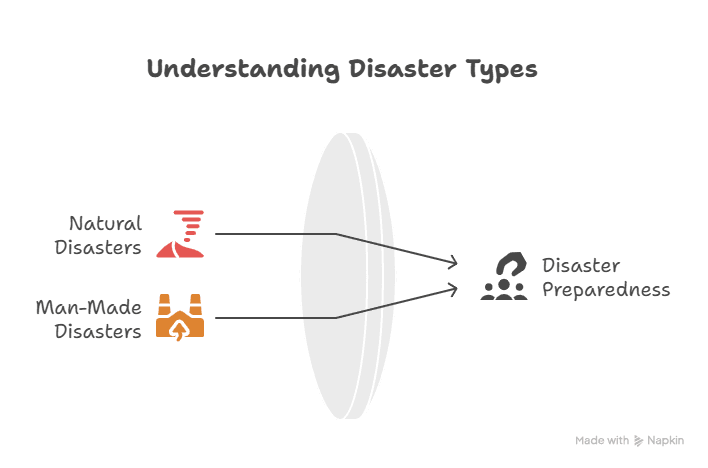
And while we’re talking about communication, it’s important for your family or group to have a clear point person. This person is in charge of getting information and passing it on to everyone else. They help you organize your messages and keep things from getting out of hand. Think of them as your own emergency news anchor (without the suit and tie). You can also want to come up with a humorous code word that means everything is fine or that aid is required without causing too much alarm.
Now, here’s where things get interesting: think about using social media as part of your communication plan. A lot of people forget that social media sites like Facebook and Twitter can be quite helpful in times of trouble. Community groups in your area often post real-time updates about the weather, safety tips, or resources that are close by. So why not use these platforms? Make sure your devices are charged, though, because looking at cat memes won’t help much when there’s an actual emergency going on!
Finally, practice makes perfect! Set up frequent times to talk with family members about how they would get in touch with each other in an emergency. Try out several situations. What if someone was in school? Or going out to do chores? Knowing ahead of time how each person will connect can help calm nerves when things get tense.
To sum up, good communication is more than just talking; it’s about being calm, educated, and connected when things go rough. We can all confront problems together instead of alone if we plan ahead and set up clear ways for loved ones to share information. Who wouldn’t want that kind of support system when things go tough?
Creating Your Emergency Plan
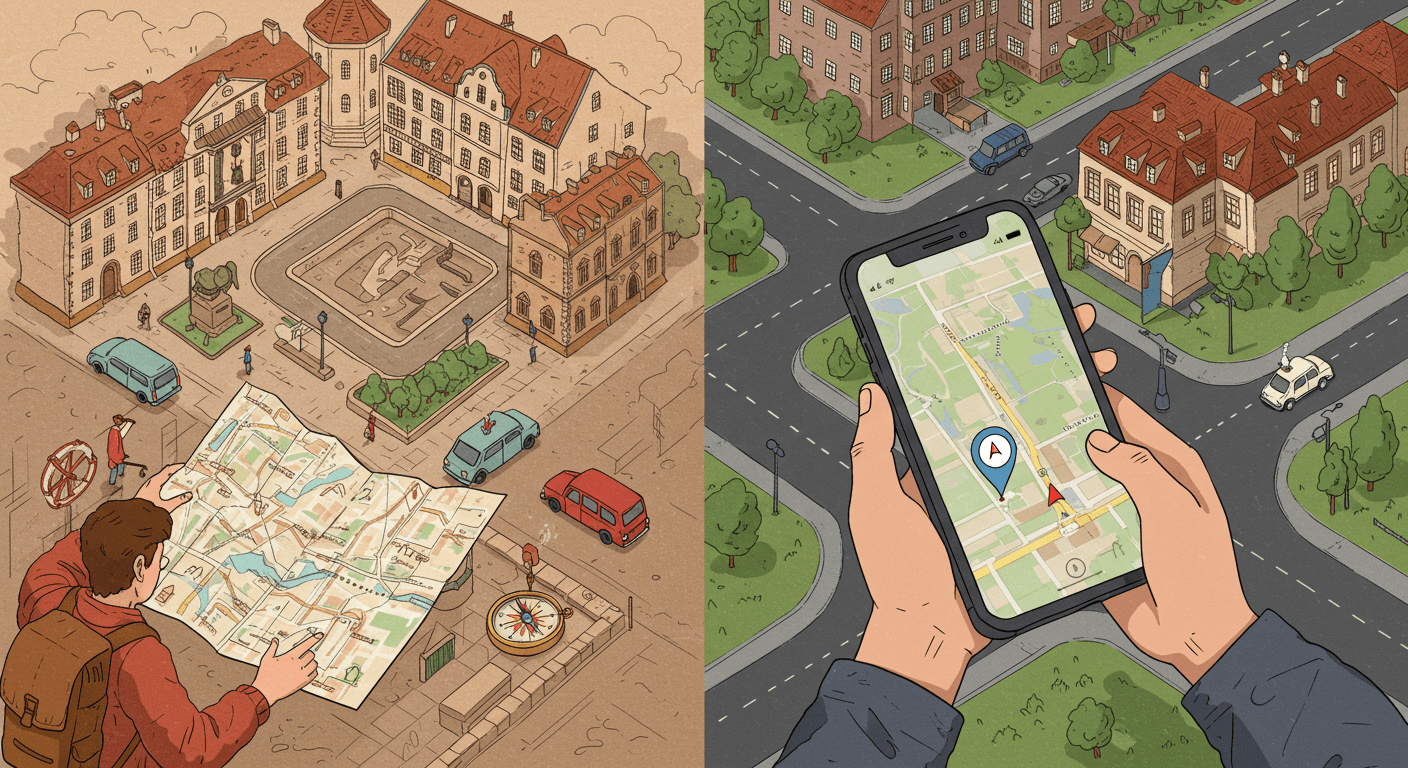
Okay, let’s speak about making an emergency plan. This is where the fun begins! You want a plan that is easy to grasp and works, even for your pet goldfish (not that he will ever need it). Talk about such situations with your family or housemates first. What would you do if there was a fire? Or what if an earthquake hit while you were eating tacos for dinner?
If things get out of hand, I suggest picking meeting places outside of your home so everyone knows where to go. It’s like hide-and-seek, but a lot more serious. And trust me, no one wants to play “Where’s Waldo?” when they’re scared about their safety.
Don’t forget to practice, though! It’s not enough to just talk about these goals; we need to really do exercises to make sure we remember everything better, even if it seems stupid at first. I mean, who hasn’t experienced that awkward moment when they couldn’t remember which way to run during a fire drill? But really, the more we do it, the more natural it gets. It’s like riding a bike: at first, you wobble and fall over, but soon you’re speeding down the street like a pro!
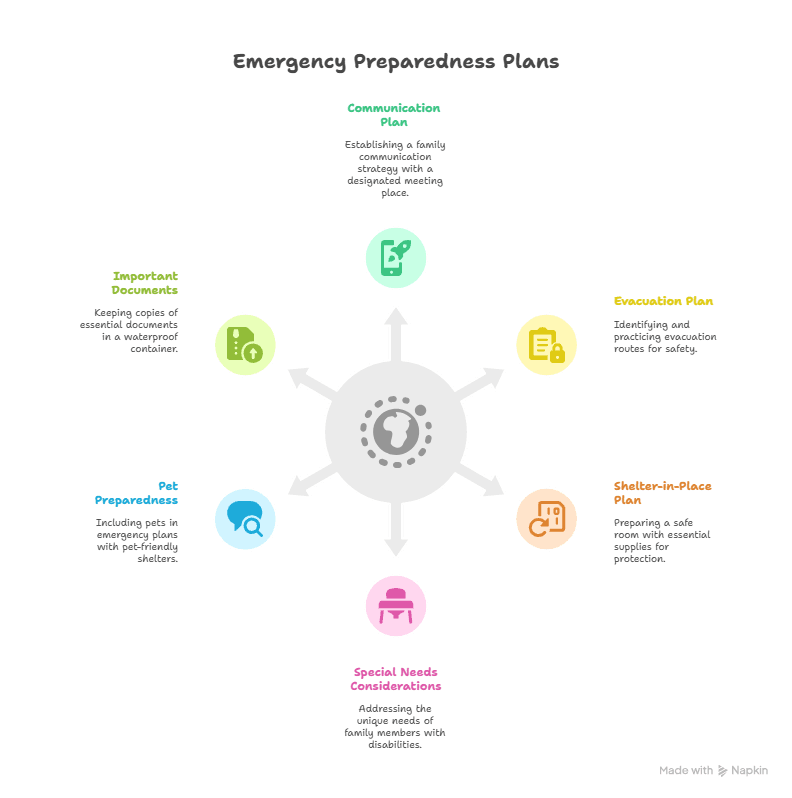
Imagine this: your family gets together in the living room for a practice drill. You have your “go-bags” full of munchies (because let’s face it, nobody wants to be hangry during a crisis) and your emergency contact list taped to the fridge. When you start to explain what everyone should do when the smoke alarm goes off, someone always makes a joke about how they’d rather be watching cat videos on YouTube than pretending there is a fire. People laugh, and just like that, you’ve made a bad situation into something funny.
Also, those practice sessions often lead to hilarious things that make important matters less serious. Your youngest sibling could get so into character that they act like they’re stuck under furniture or scream for aid in a theatrical way, as if they’re trying out for a movie role. Yes, the performance might not be good enough for an Oscar, but those little moments help everyone get closer. And really, wouldn’t you rather laugh than panic?
Adding games to these drills can actually make them more fun! Find exciting methods to act out emergencies, such a scavenger hunt for supplies or obstacle courses that look like escape routes. This not only helps everyone remember what they should do, but it also makes learning fun.
And here’s another idea: After each drill, take some time to talk about what went well and what may be better. This reflection allows everyone to feel like they are being heard and that they are helping to shape future practices. Who knows? Your kids might have some great ideas that make getting ready for an emergency seem less scary and perhaps have them thinking outside the box.
So, certainly, it’s important to practice! It turns vague ideas into behaviors we all know by heart. Also, those times when we all laughed and had fun will remind us of why we prepare in the first place: to keep our loved ones safe while still having fun along the road! So get your friends together and get ready to practice. You never know when those skills will come in helpful!
Building Your Emergency Kit
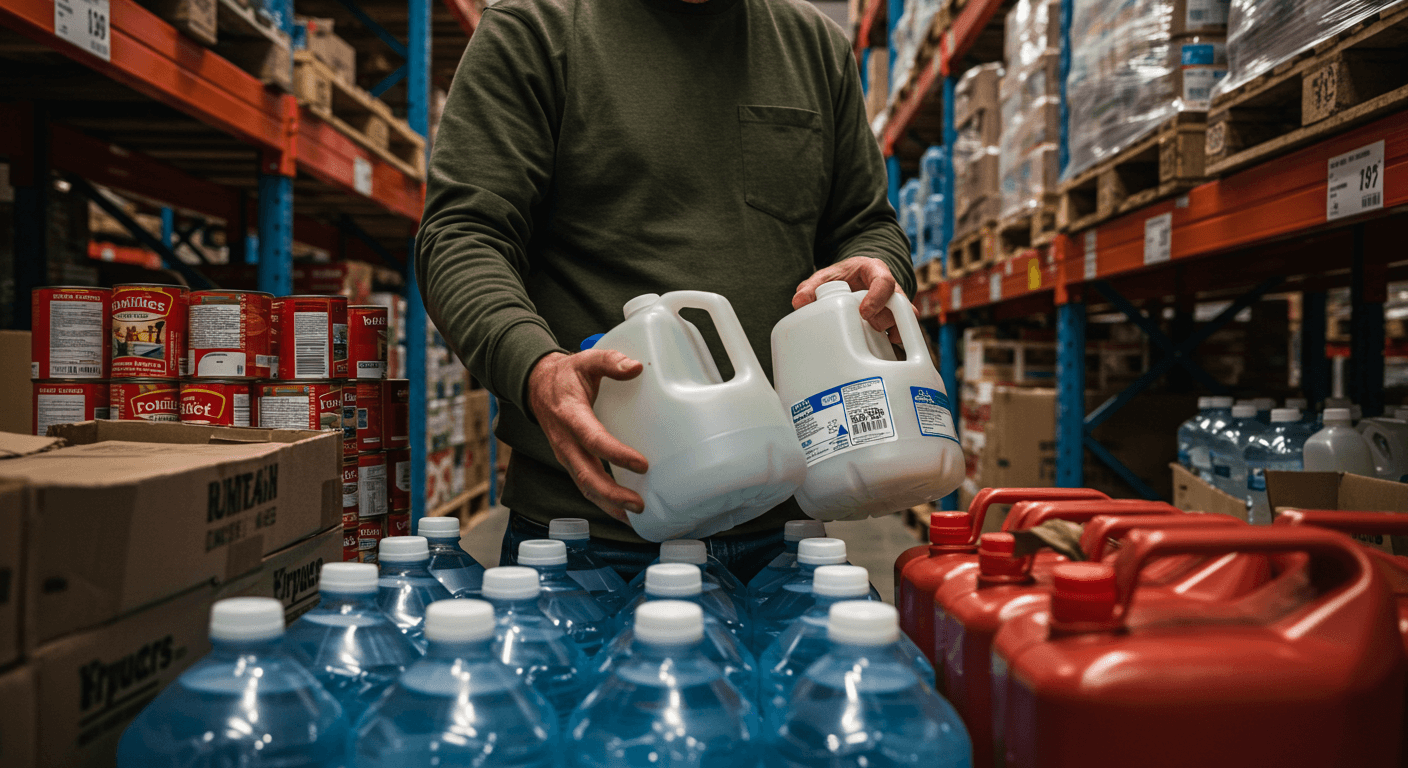
Now for the fun part: putting together your emergency kit! This isn’t just any regular bag; it’s like your own treasure box for survival! Start with the basics, like water (a gallon per person per day) and food that won’t go bad. Nothing says “prepared” like having beef jerky and granola bars on hand for when it rains.
But hold on! And there’s more! Include things like first aid kits with little wounds because splinters happen even when things are calm, and flashlights with extra batteries because darkness has a strange way of creeping in at the worst times.
It’s interesting to think about adding personal touches as well! When calamity hits, it’s tempting to get caught up in the seriousness of the situation. But let’s be honest: a little comfort can really help raise your emotions. What if you were stuck at home during a power outage with nothing but the sound of quiet and your own thoughts? That’s when those little, considerate things come in handy.
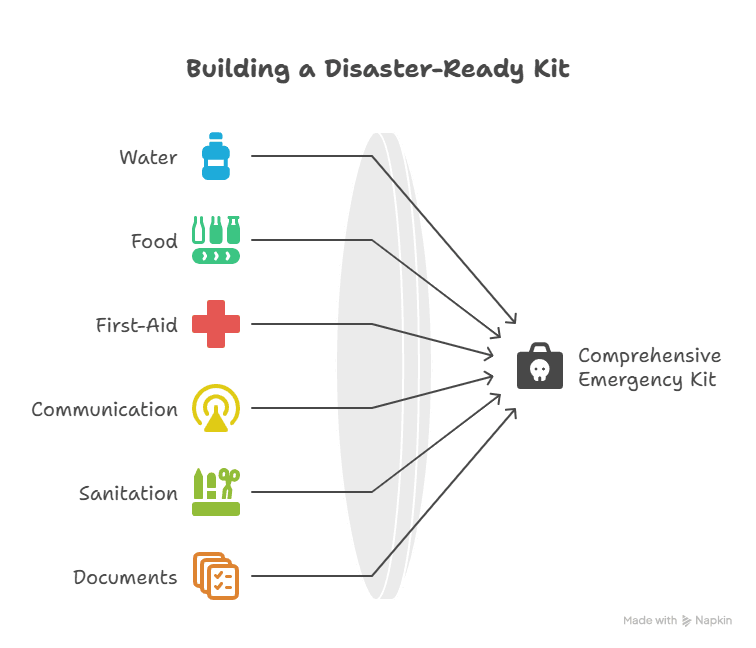
First of all, bringing a deck of cards is a great idea. Who doesn’t enjoy a nice game of Crazy Eights or Go Fish? It’s not simply a way to pass the time; it also gives you a chance to laugh and connect with others. You could end up in a huge family tournament that gets competitive very quickly. Believe me, there’s nothing like the rush of winning a round while everyone else acts like they’re really upset because they lost. Plus, you’ll have some wonderful stories to tell later!
Speaking of fun things to do, puzzles are another great addition. When everything outside seems like a mess, putting together a picture is immensely fulfilling. Imagine this: you and your family are sitting around the dining table, putting together those weird shaped pieces while telling stories and remembering things. It’s like making your own small universe in the middle of uncertainty, a warm place to hide from whatever storm is coming.
Let’s speak about food now! These tasty snacks may really boost your spirits when things are tough. You might add some chocolate bars or your favorite candy. Who doesn’t feel better after eating something sweet? Having familiar tastes around might bring back happy memories and remind us that life isn’t all bad, even if it seems like a small thing. You could also make “emergency snack bags” containing treats that everyone loves. Just think about how much better things would feel after you eat those delectable treats!
But don’t forget how strong nostalgia may be! Add some childhood favorites, such gummy bears or popcorn, to make people happy and improve their spirits. To be honest, these little things can really help keep everyone happy when things get stressful.
It’s also important to note that these personal touches don’t have to be things; they may simply be activities! When you have some free time, you might write down family jokes or hilarious recollections on pieces of paper so you can deliver stories on the spot. This makes people feel like they are all in this together, even when everything else seems questionable.
In conclusion, adding these little things, like games, snacks, or hobbies, can really help when things grow uncomfortable. They turn boring times into chances to interact and have fun. So as you are ready for any possible disasters that can happen, don’t forget to add those personal touches that will make people smile, even if it means telling a few embarrassing stories along the road!
Staying Informed During Emergencies
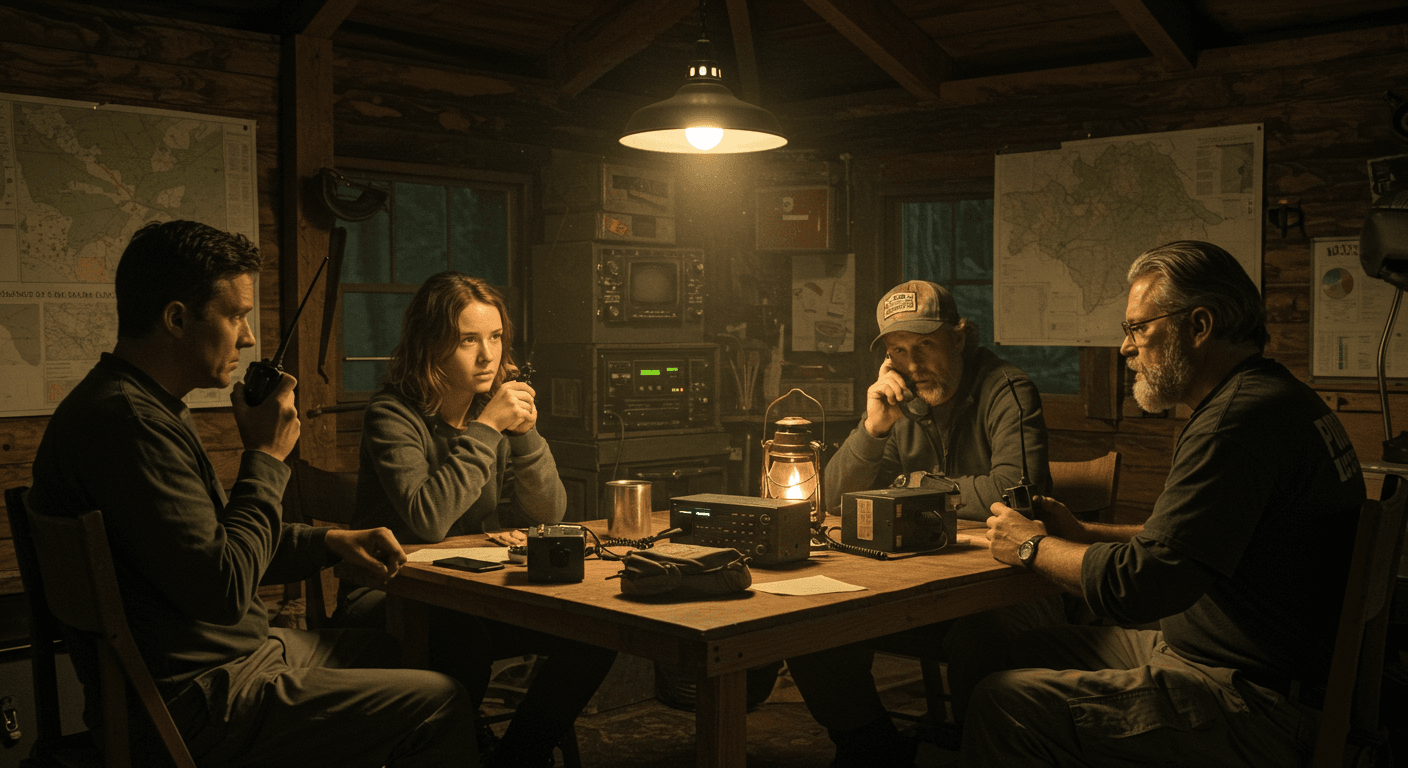
Staying informed is also part of being ready, so let’s talk about how we can do this without becoming news junkies that are addicted to their screens all the time. First, sign up for local alerts about severe weather or events that are happening in your region. Many municipalities now offer free text message alerts!
Also, think about installing trustworthy applications that provide you real-time updates on the weather in your area. Trust me, these are lifesavers when Mother Nature decides she needs attention! What else helps? You may listen to battery-powered radios in case cell towers go down during big events. This keeps you connected even when technology fails us!
And to be honest, don’t underestimate social media either! In today’s fast-paced world, sites like Twitter and Facebook are important for keeping up with what’s going on during emergencies. It’s like having a news reporter in your pocket if you could obtain real-time updates about a natural disaster or local issue right from the source. Following local authorities like fire departments, police stations, and emergency management groups can help you stay up to date on evacuation routes, shelter locations, and safety information.
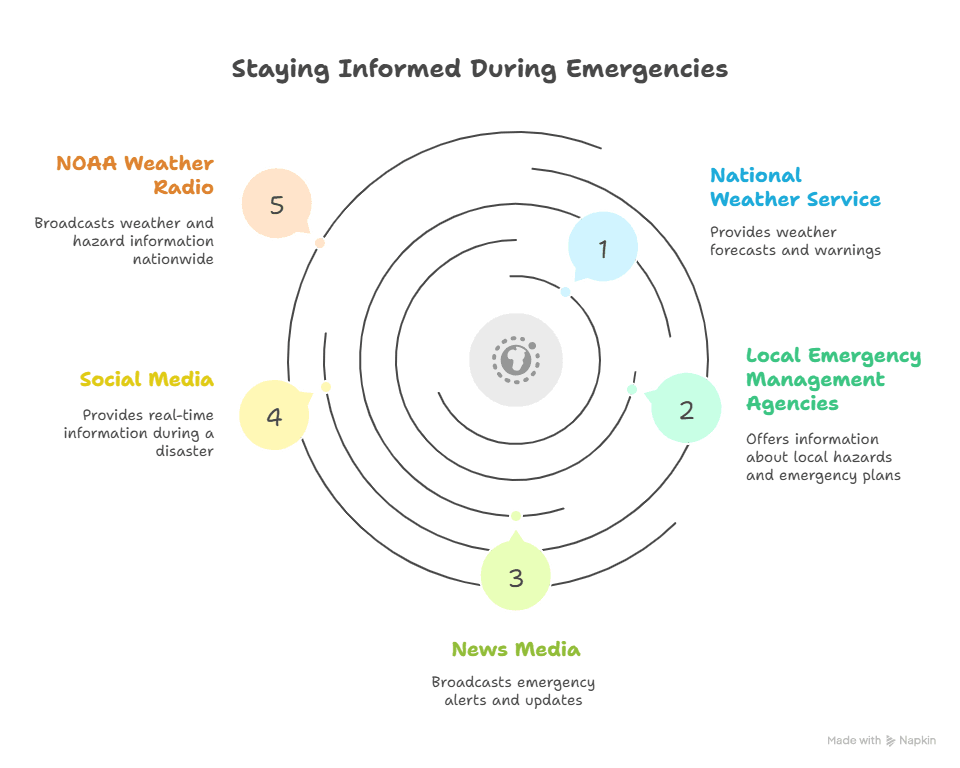
But it’s important to remember that not everything on the internet is accurate (I’m looking at you, conspiracy theories!). Social media can be both good and bad; it gives you quick access to information but also lets a lot of false information spread. I mean, who hasn’t seen those crazy posts that say aliens are coming to save us from hurricanes? Before you act on any information, you should always check it out. Always check anything you read on social media against legitimate sources, such as government websites or news sites you trust.
The community component of social media is also something that should be talked about. People often use these sites for more than simply information during times of crisis; they also use them for support. You could locate local groups that help each other out by sharing things like food drives or supplying temporary housing. These links might help neighbors who might not have talked to each other before feel like they are part of a community.
It’s interesting because social media isn’t simply a way to get updates; it’s also a way to raise awareness. Don’t be afraid to share if you see something significant that others should know about, such road closures or services that are available. Your message could be the only thing that saves someone else’s life in an emergency. Also, let’s be honest: sharing memes about how to stay alive might make things less serious when they get serious!
It’s important to set limits when using social media during emergencies, but it’s also helpful to do so. When you get a lot of notifications and alerts all the time, it might be easy to feel overwhelmed. So, during times of high stress, think about limiting your screen time or only following a few trusted accounts. This will help you stay focused without becoming distracted by more noise.
In conclusion, if you utilize social media responsibly, it may be a great tool for becoming ready for disasters. You can better handle tough times by keeping up with news from reliable sources and remaining in touch with your community online. Just remember to think carefully before you believe anything you read online. And maybe save those beliefs about aliens for another day!
Community Preparedness: Team Up!
I love talking about how to get ready for emergencies in the community! You might assume that preparation is all about doing things alone, but working with others makes everything less scary. Local groups often have workshops where people get together to share advice and resources. It turns out that other people often have great ideas that are worth copying (in the best way possible).
Plus, the more relationships we make in our neighborhoods, the better everyone will be overall! When disasters hit hard—and they will—we’ll work together to get through them instead of feeling alone in the middle of the mayhem.
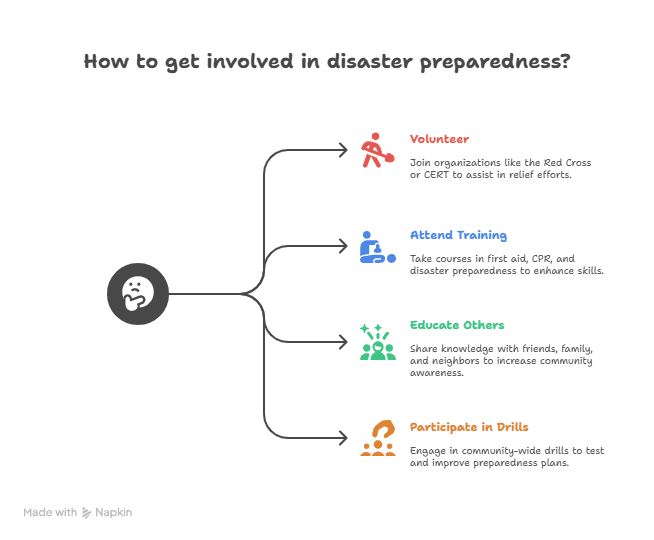
Join neighborhood groups that focus on being ready for emergencies. They’re usually full of nice people who want to share what they know during coffee breaks that are full of food. Seriously, who doesn’t like a tasty cookie or piece of cake when talking about how to get ready for the worst? These events can be both fun and educational, making it possible to study while enjoying some tasty snacks.
You’d be astonished at how much you can learn from these local events. People come together with all kinds of experiences. Some have been through disasters firsthand, while others may know how to do first aid or survive in the wild. Picture yourself sitting around a table with a cup of coffee and listening to people talk about what worked and what didn’t during emergencies. It’s like taking a crash course in how to get ready for a crisis without the stress of formal training! Everyone is also there for the same reason: to make their town safer.
And on the subject of community spirit, these clubs often set up exercises and practice sessions where you can use what you’ve learned. It’s great to do a simulated emergency situation with your neighbors; it creates friendship and helps you remember what you’ve learned. You might even giggle when someone mistakenly slips over their own feet while rehearsing evacuation routes. It happens to the best of us!
It’s interesting that a lot of community groups work with local governments and organizations to offer materials that might not be easy to find otherwise. They might hold courses on things like basic first aid, fire safety, or even how to defend yourself—skills that could be very useful in an emergency. You’re not only getting ready for these activities, but you’re also making your community stronger as a whole.
But don’t forget how important it is to network with other people in these communities. People from different backgrounds will be there, and they may have talents or resources that could help you later on. You might meet someone who has extra camping gear they can lend you in an emergency or someone who is good at putting together supply drives for people who need them. Making friends now can help you when things get tough in the future.
Why wait, then? Get involved in your neighborhood and look for clubs that are focused on being ready for emergencies. You’ll learn useful things, make friends with people who think like you, and enjoy some nice refreshments along the way! It’s about making preparation more entertaining instead of just another thing to do on your list. And who knows? You might make friends for life who love being ready for anything life throws at them as much as you do!
Conclusion: Embrace Preparedness with Open Arms
In conclusion (yeah, I’m finishing this now), getting ready for a disaster doesn’t have to be boring or too much work. It can be both empowering and entertaining! By making tiny plans today for the future, you’re not only making sure you can survive, but you’re also giving yourself peace of mind knowing that you’re ready for whatever that comes your way.
So, get those kits ready today, make those plans happen, and don’t forget that laughter is one of the best ways to stay alive, even when things are crazy!
Frequently Asked Questions
What is disaster preparedness and why is it important?
Disaster preparedness means having a plan, supplies, and communication strategies ready before an emergency happens. It helps protect you and your loved ones during unexpected events like storms, power outages, or other crises.
What should be included in a basic emergency plan?
A basic emergency plan should include meeting locations, escape routes, emergency contacts, and a communication system. Every family member should know what to do and where to go during a crisis.
How can families stay connected during emergencies if cell service is down?
Families can stay connected by using backup methods like walkie-talkies, emergency radios, or pre-arranged meeting points. Choosing one person to act as the main contact also helps keep communication organized.
What should I pack in an emergency kit?
Your emergency kit should include water, non-perishable food, flashlights, extra batteries, a first aid kit, medications, tools, and personal comfort items. Add fun items like cards or snacks to help keep morale up during stressful times.
How often should we practice emergency drills?
You should practice emergency drills at least a few times a year. Regular practice helps make responses automatic, so everyone stays calm and confident in real emergencies.
How can social media help during a disaster?
Social media can provide real-time updates from local emergency services and community groups. It also connects people who need help with those offering support, but always verify information before acting on it.
Why is community involvement important for preparedness?
Community preparedness builds teamwork and support networks. Local groups can share skills, resources, and knowledge, making it easier to respond to emergencies together rather than facing them alone.
Suggested External Resources
Disaster Preparedness Toolkit
https://www.ready.gov/kit
Emergency Preparedness Resources
https://www.redcross.org/get-help/how-to-prepare-for-emergencies.html
Community Emergency Response Teams
https://www.fema.gov/cert

Kevin Collier is a seasoned outdoor enthusiast and writer for Trekbug.com, specializing in outdoor adventures, survival strategies, and prepping insights. With a deep love for nature and a commitment to self-sufficiency, Kevin empowers readers to embrace the wilderness confidently. He shares valuable tips, practical techniques, and inspiring stories, helping both novice and experienced adventurers develop essential skills for surviving and thriving in the great outdoors.

